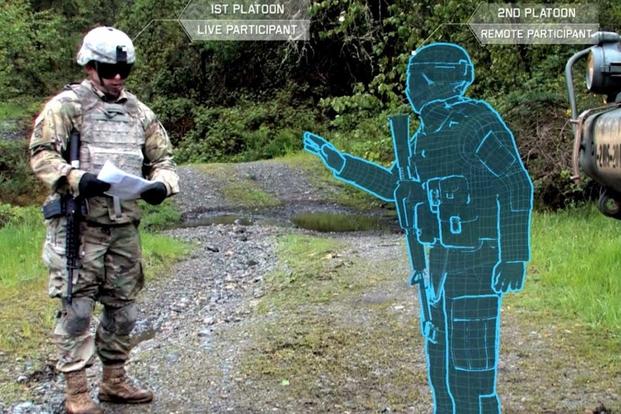Will lawmakers put the Army's new virtual reality training program in their crosshairs as they debate cuts within the next fiscal budget?
While the service is hoping that doesn't happen, it is preparing to make some potential trade-offs to push key elements of the synthetic training environment forward, officials said during the annual Association of the U.S. Army Annual Meeting and Exposition.
"We're working to make sure that we stay on a glide path for [fiscal] 2021," said Maj. Gen. Maria Gervais, the STE cross-functional team director. The synthetic training environment -- virtual training environments copied from real surroundings around the globe to prep soldiers for realistic combat scenarios -- is expected to reach initial operating capability, or IOC, in fall 2021.
"But the [budget] marks will impact our ability, depending on what comes out of the conference session, and [then] we'll determine how we can reach IOC," Gervais told reporters during a roundtable in Washington, D.C., on Tuesday. "It depends on what the number comes out to be."
During her speech on synthetic training environments earlier at the show, she said trial-and-error and initial testing conducted by soldiers have helped reshape the requirements needed to make STE effective, which led to developing seven other contracts through Other Transactional Authorities (OTAs) -- a small pot of money for fielding and prototyping
Related: Soldiers to Get Advanced Virtual Training Tools Next Year, Army Says
The Army has so far dedicated $140 million to the program between its fiscal 2018 and 2019 budgets, officials said Tuesday. But lawmakers have concerns.
Senators cut nearly $80 million from the Army's initial $136 million budget request for the program for fiscal 2020, citing prior "misappropriation of resources," according to Breaking Defense.
"Once we see the final number, we'll understand the impact" on making STE operational, Gervais said.
She said the service has wanted for years to leverage ideas from the billion-dollar gaming industry, swapping out old tech for the latest emerging tech.
This "will be a second revolution in training. It will improve home station training, it will help us go into live training environment at a much higher level, and it will help us overcome some of the limitations we have in training right now," Gervais said. "We need to find other technologies out there that could solve our problem and is better than what we have."
Multiple elements make up the STE, such as One World Terrain -- a Google Earth-like program that offers soldiers any type of terrain from "mega-cities" to dense urban areas at the touch of a button.
"Automating the process to get that terrain data ... into the hands of the war fighter in a very short time" is one of the requirements, added Matthew Clarke, director of the simulation and training technology center and Combat Capabilities Development Command (CCDC) Soldier Center.
Additional components include training and simulation software (TSS) and the training management tool (TMT), which can manipulate the training scenario, according to the service.
Clarke said the two are essential and operate "as the backbone of the STE."
An additional capability that developers are working on is the "e-bullet," or high-fidelity weapons orientation used while working in the simulated field. The fundamental solution to the e-bullet model is One World Terrain, Clarke said, to successfully "understand the terrain between the target and the shooter."
"We are looking at models, applications, scalability, all those things that are making the backbone, the architecture, of the STE work," he said.
-- Oriana Pawlyk can be reached at oriana.pawlyk@military.com. Follow her on Twitter at @Oriana0214.
Read more: Air Force Getting Ready to Deploy a Drone-Killing Laser and Phaser













